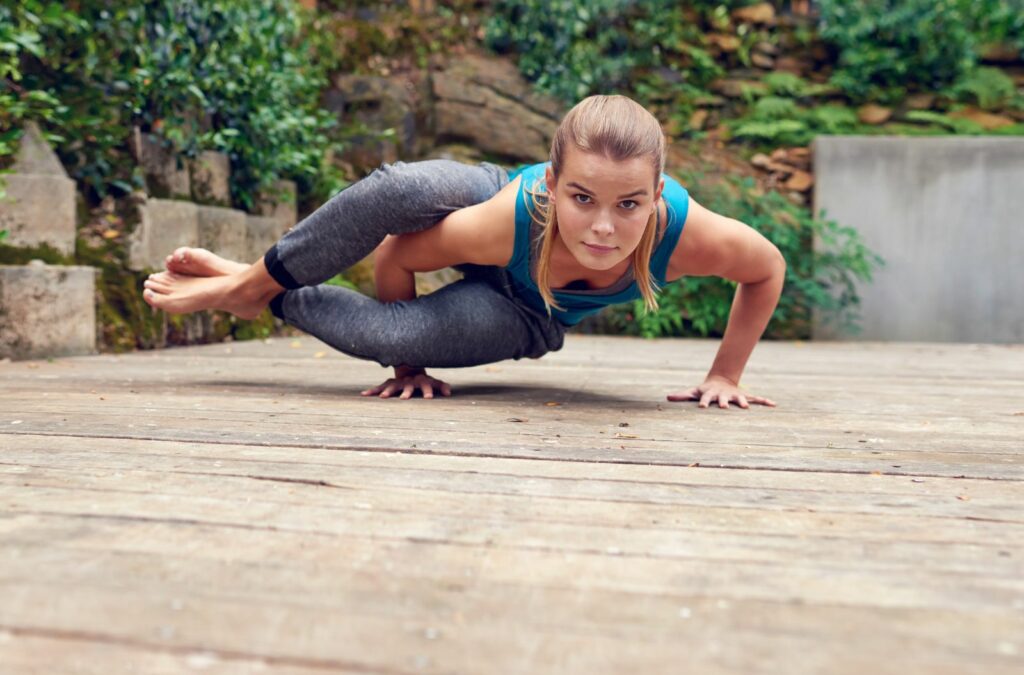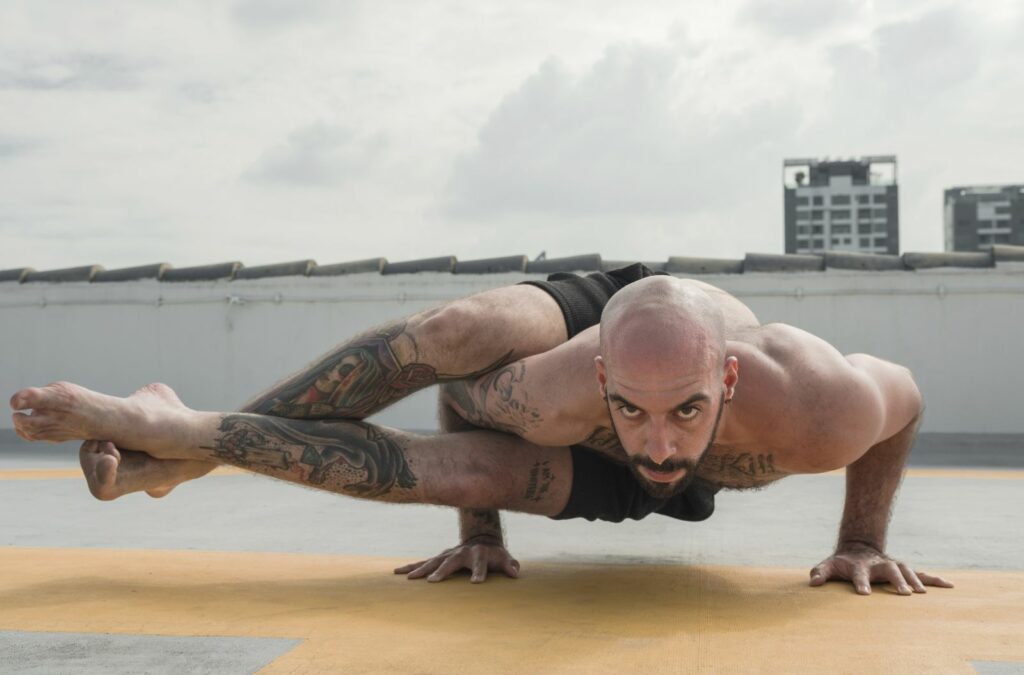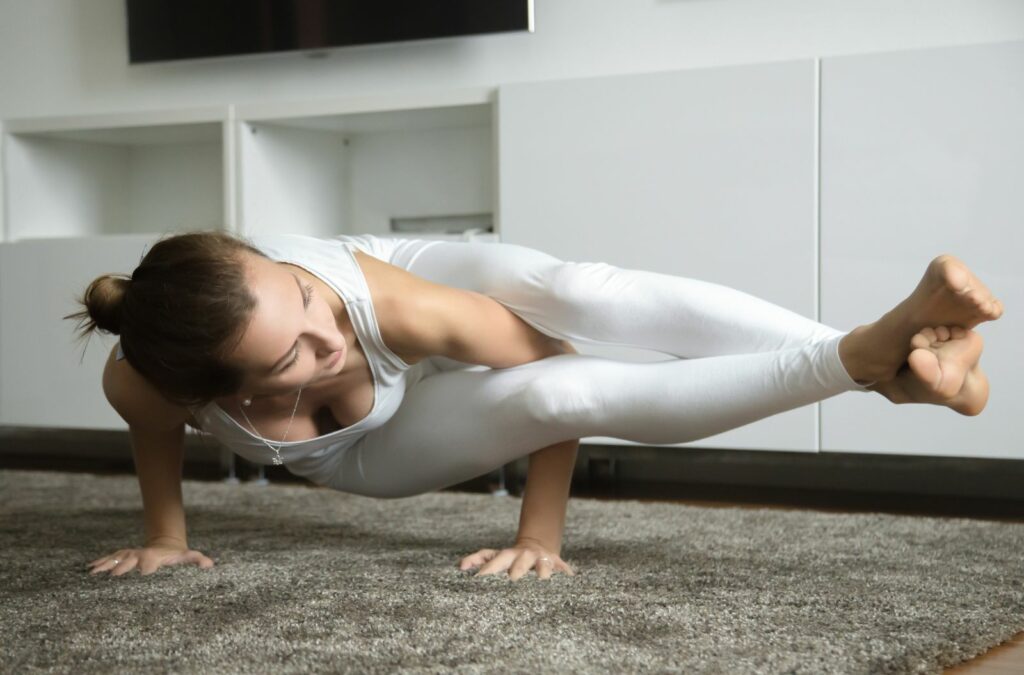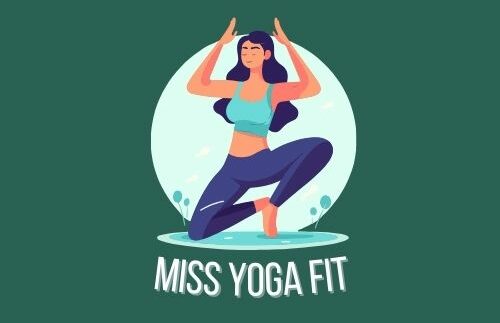Eight-Angle Pose, or Astavakrasana, is a challenging arm balance that requires a strong upper body and core stability. This yoga pose combines elements of flexibility, strength, and balance, making it an excellent practice for building physical and mental resilience.

How to Do Eight-Angle Pose
In this section, we will provide a step-by-step guide on how to do Eight-Angle Pose with proper alignment and breath control. Whether you are a beginner or an experienced practitioner, these instructions will help you master this challenging arm balance.
Key Takeaways:
- Eight-Angle Pose, or Astavakrasana, is an advanced yoga pose that requires balance and strength.
- Proper alignment and engagement of the upper body, core, and limbs are crucial for achieving stability in Eight-Angle Pose.
- Breath control plays a vital role in finding balance and focus while performing this challenging arm balance.
- Preparatory poses, such as Chaturanga Dandasana, can help develop the necessary strength and stability for Eight-Angle Pose.
- Modifications and variations are available for practitioners of different levels, allowing everyone to experience the benefits of this pose.
Preparing for Eight-Angle Pose
Before attempting Eight-Angle Pose, it’s important to prepare your body through a series of warm-up exercises and poses that target the core and upper body. This will help build the necessary strength and flexibility required for this challenging arm balance.
Start by warming up your body with some gentle stretches for the wrists, shoulders, and hips. This will help increase mobility and reduce the risk of injury. Yoga poses such as Downward-Facing Dog, Cat-Cow, and Child’s Pose are great options to include in your warm-up routine.
Next, incorporate specific exercises that target the core and upper body, which are the primary areas engaged in Eight-Angle Pose. Plank Pose, Arm Balance Pose, and Crow Pose are excellent preparatory poses that can help you build the required strength and stability. These poses also help develop the necessary muscle memory and body awareness needed for Eight-Angle Pose.
Remember to listen to your body and work at your own pace. If you’re new to arm balances or have any existing injuries, it’s always a good idea to seek guidance from experienced yoga teachers who can provide modifications and proper alignment cues.
| Warm-up Exercises | Preparatory Poses | Benefits |
|---|---|---|
| Wrist stretches | Plank Pose | Increases wrist flexibility and strength |
| Shoulder stretches | Arm Balance Pose | Improves shoulder stability and upper body strength |
| Hip stretches | Crow Pose | Enhances hip mobility and core activation |
Developing Core Strength
- Include exercises like Boat Pose, Plank Pose, and Bicycle Crunches in your routine to strengthen the core muscles.
- Practice stability exercises such as Side Plank and Forearm Plank to target the obliques and deeper core muscles.
- Engage in regular strength training exercises, such as push-ups and tricep dips, to build overall upper body strength.
Remember, preparation is key when it comes to attempting challenging yoga poses like Eight-Angle Pose. By gradually building strength, flexibility, and stability in the core and upper body, you can feel confident and safe as you progress in your practice.
Steps to Perform Eight-Angle Pose
To perform Eight-Angle Pose, start from a seated position and follow these step-by-step instructions to achieve the correct alignment and balance:
- Begin by sitting in Staff Pose (Dandasana), with your legs extended in front of you.
- Lift your left leg onto your left shoulder, hugging the arm with your leg. If your leg doesn’t reach your shoulder, hold it with both hands at the highest point you can access.
- Plant your hands shoulder-width apart on the floor and cross your right foot over your left, hooking the ankles around each other.
- Slide your hips back along the floor and lift both shoulders away from the floor to come into a face plant position.
- Inhale and lift your shoulders in line with your elbows.
- Press your top leg down onto your arm and lift your hips.
- To float into the pose, squeeze your inner thighs and bend your knees to lower back down.
- Repeat the steps on the right side.
and following the step-by-step instructions, you can gradually work towards mastering Eight-Angle Pose. Remember to listen to your body and modify the pose as needed, ensuring you maintain proper alignment and avoid any strain or discomfort in the wrists, elbows, lower back, or knees.
Benefits of Eight-Angle Pose:
- Strengthens the upper body and core muscles
- Improves balance and coordination
- Stretches the hamstrings and inner thighs
- Enhances focus and concentration

Tips and Modifications for Eight-Angle Pose
While Eight-Angle Pose offers numerous benefits, it’s important to practice with caution and make modifications if needed to ensure safety and proper alignment. Here are some tips and modifications to help you practice this pose effectively:
| Tips and Modifications | Description |
|---|---|
| Avoid this pose if | You have a wrist or elbow injury, or if you feel any pain or discomfort in your shoulders, wrists, or elbows. |
| Contraindications | If you have any pre-existing conditions such as carpal tunnel syndrome or a shoulder impingement, it’s best to avoid practicing Eight-Angle Pose. |
| Shoulder blades | Focus on keeping your shoulder blades engaged and drawn toward your midline to maintain stability and prevent strain in your shoulders. |
| Chest forward | Keep your chest lifted and your heart open throughout the pose to promote proper alignment and breathing. |
| Left shoulder | Be mindful of your left shoulder as you transition into the pose. Avoid sinking into the joint or putting excessive pressure on it. |
| Core strength | Building core strength is crucial for maintaining stability and control in Eight-Angle Pose. Incorporate exercises like Chaturanga Dandasana to strengthen your core and upper back. |
| Hips back | As you slide your hips back along the floor, focus on engaging your core and glutes to support and stabilize your lower body. |
| Chaturanga Dandasana | Developing strength and stability in Chaturanga Dandasana can help you build the necessary foundation for Eight-Angle Pose. Practice this pose regularly to enhance your upper body and core strength. |
Remember to always practice mindfully and listen to your body’s limits. It’s better to take it slow and make modifications than to force yourself into a pose that doesn’t feel right for you. With time and consistent practice, you can gradually progress and explore more advanced variations of Eight-Angle Pose.

Conclusion
Eight-Angle Pose, when practiced with proper alignment and preparation, can offer a range of benefits for the body and mind. This challenging arm balance requires strength, flexibility, and focus, making it an excellent practice for building overall physical and mental resilience.
One of the main benefits of Eight-Angle Pose is the improvement in core strength. By engaging the abdominal muscles and the muscles along the sides of the torso, this pose helps to tone and strengthen the entire midsection. Additionally, the pose requires a strong upper back and shoulder girdle, which can help to alleviate tension and improve posture.
Furthermore, practicing Eight-Angle Pose can enhance balance and coordination. By focusing on the alignment of the limbs and maintaining steady breath control, practitioners develop a heightened sense of body awareness and control. This increased awareness can translate into improved balance both on and off the mat.
It’s important to note that Eight-Angle Pose may not be accessible or suitable for everyone. If you have any injuries or limitations, it’s best to avoid practicing this pose or seek guidance from a knowledgeable yoga teacher. As with any yoga pose, it’s crucial to listen to your body and modify or skip the pose if it feels uncomfortable or painful.
Magda Felcio, a certified Vinyasa Flow Yoga teacher in Brazil, is deeply passionate about the grace and transformation this practice offers. With a commitment to empowering her students, she creates harmonious and flowing sequences that focus on alignment and mindfulness.

